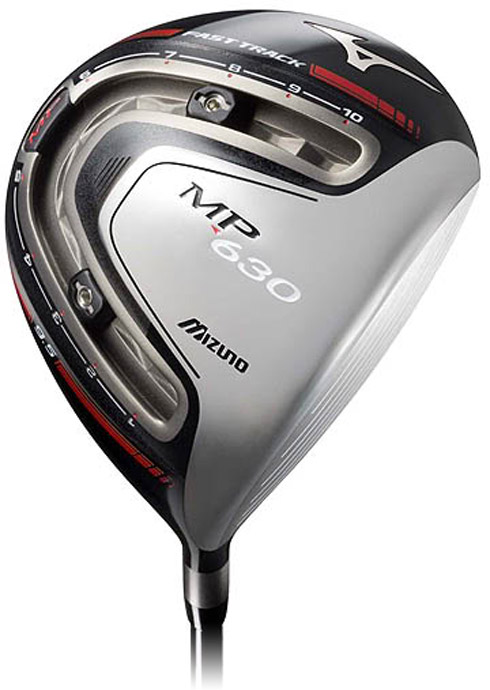 When you say the name “Mizuno” to the typical golfer, they first think of one thing – forged irons, often a muscleback or blade type material.
When you say the name “Mizuno” to the typical golfer, they first think of one thing – forged irons, often a muscleback or blade type material.
If this typical golfer kept thinking, they might never arrive at “drivers,” let alone drivers with adjustable weights. As popular as Mizuno is for their irons, they’re at least as unpopular for their hybrids, fairway woods, and drivers.
Unfortunately, their stellar irons overshadow an impressive woods/metals lineup, the best of which may very well be the MP-630 Fast Track driver. Read on as we shed a little light on Mizuno’s under-appreciated driver.
Design and Technology
Mizuno first introduced adjustable weight technology in their MP-600 driver (reviewed here), and the technology has come a long way since the MP-600’s release.
While the MP-600 offered 15 weight configurations, the MP-630 triples that number and allows for 45 different weight configurations. The driver contains two eight-gram weights in a “track” – the weights can be loosened with the included screw, slid to their desired position, and tightened in place. Unlike TaylorMade’s drivers, you can’t lose the weights and you can’t accidentally goof up the swingweight.
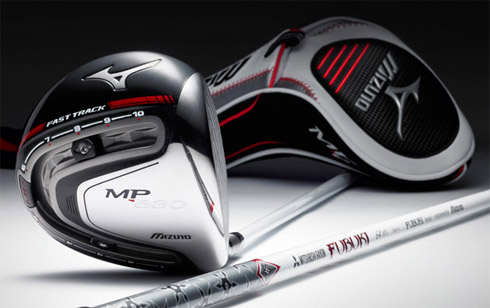
Practically, 45 positions all but guarantee the player will be able to choose a ball flight (both vertically and horizontally) that suits the player. Weight moved left and right in the driver will alter the ball flight laterally, while weight moved towards the face or towards the back of the driver will affect spin and launch angle.
The original Fast Track design was a breakthrough in adjustable technology, as it became the fastest and easiest way to effectively manipulate weight in order to tune your ball flight. Now, this next generation of Fast Track technology in the MP-630 Fast Track once again takes trajectory tuning to a whole new level. Within the 45 possible ball flight settings, players can not only control their ball from left to right, but the weights can now also be adjusted to control up-down trajectory. Simply put, Fast Track is the ultimate technology for unsurpassed ball control off the tee box.
Dick Lyons, VP and General Manager, Mizuno
The MP-630 Fast Track driver features a traditional, pear-shaped appearance at setup. The face is created using Mizuno’s proprietary “Hot Metal technology” and is composed of Ti-9 Titanium with CNC CORTECH technology. As with every driver on the market today, Mizuno claims this allows for a larger sweet spot for longer distance. Mizuno is also quick to note that engineers put tremendous effort into fine-tuning the sound and feel.
Esthetics
I’m sure you’ve heard the phrase “business in the front, party in the back” to describe that 80s atrocity: the mullet.
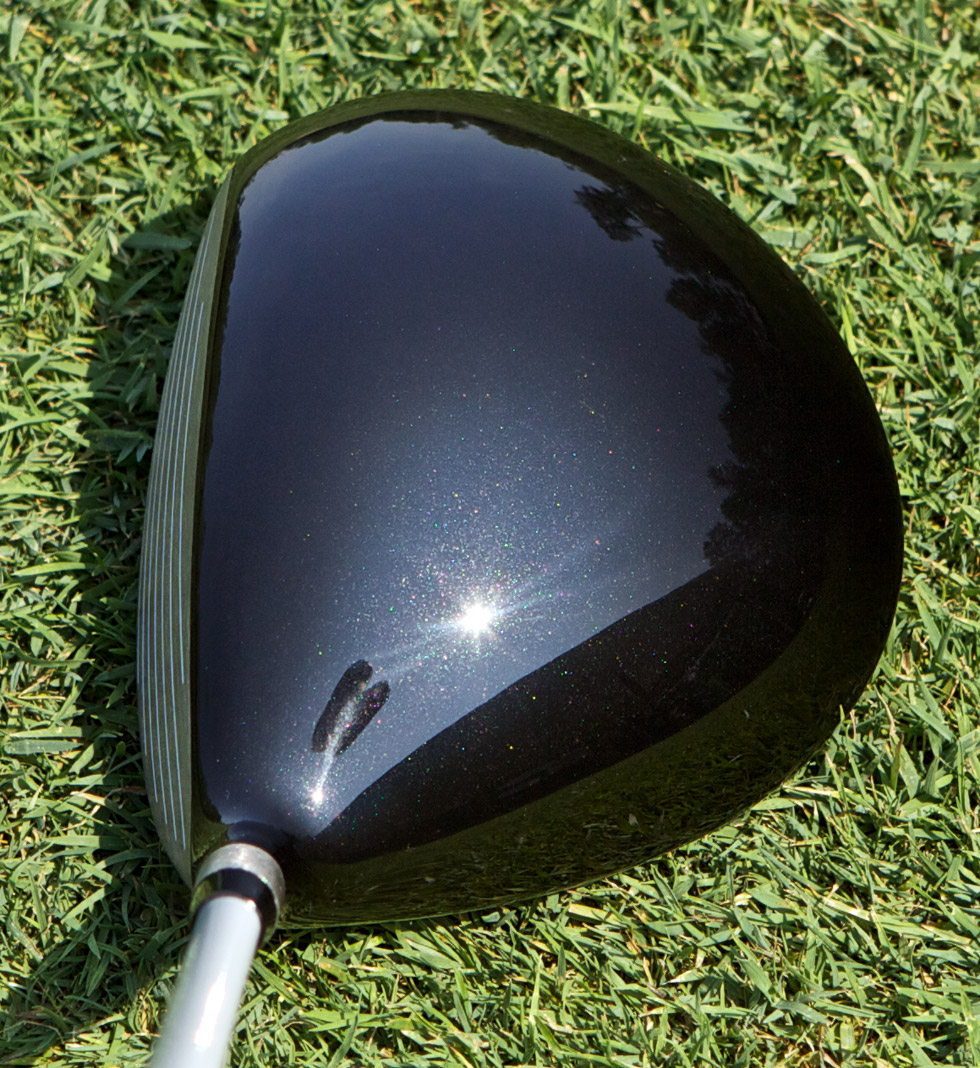
The Mizuno MP-630 Fast Track driver is clean and classic looking at address.
Though I’m sure the Mizuno folks won’t care for the analogy, the MP-630 Fast Track driver pulls off a similar feat. At address, the club looks as classic as it gets. Flip it over and look at the sole and you’ll find an impressive amount of technology. Mizuno is perhaps one of the more traditional golf companies out there, and they’ve managed to stuff a good bit of tech into a classic package: “tradition on the top, technology on the bottom.”
At address, the black semi-glittery pear-shaped crown is complimented by an austere, short hosel and a clean, silver clubface that, unlike many modern drivers, features scoreline grooves what span the entire width of the clubface. The clubhead, at setup, is plainer than the persimmon drivers of yester-year. Heck, there’s not even an alignment aid on the crown! I like it!
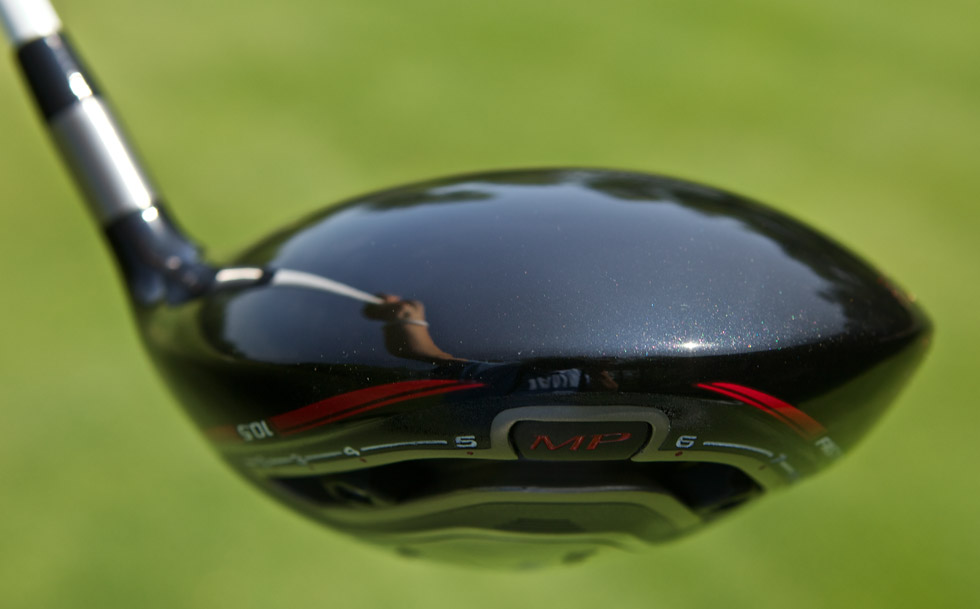
From the bak the “cat’s eye” look of the club looks apparent – it has a rounded crown and sole with pointed edges.
Flip the club over and things get busy in a hurry. The bottom features a blend of shades of silver, black, and red and white to show off the Fast Track system. Two weights with a hex key screw are positioned in two of the positions numbered “1” to “10” with white letters. The titanium from the face wraps around to the sole and back towards the inner part of the “U” formed by the Fast Track system. It’s emblazoned with “MP 630” and the Mizuno name. The markings are completed by, from heel to toe around the back edge, the loft in white, the letters “MP” in red, and “Fast Track” in white with the Mizuno logo on the toe.
The clubface is a bit of a throwback look. In the day and age of taller faces, or simply bigger faces, the MP-630 has what appears to be a good bit less clubface area than others. I’d describe the shape as a “cat’s eye” look, with pronounced curve from the heel to the toe both along the top and bottom lines of the club. The club’s smaller looking clubface simply doesn’t make it appear to be very forgiving.
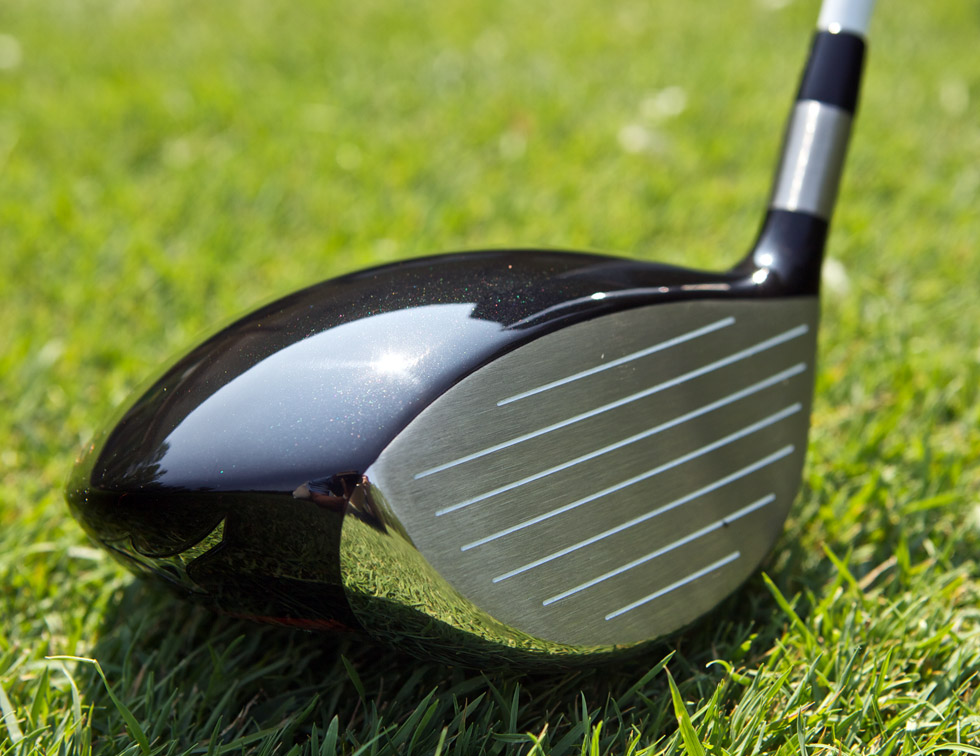
You’ll notice that the curve along the lower edge of the face is quite pronounced.
The stock Fubuki shaft is silver, black, red, and white and nicely carries on the color scheme. The bottom of the shaft – everything you’ll see at setup – is white and will not distract you from putting a good swing on the ball.
Performance
I may be guilty of some bias against Mizuno’s drivers, but a few swings with the MP-630 Fast Track have convinced me otherwise. It didn’t take long before I started referring to this thing as “my little cannon” and I’ve never had a better year driving the golf ball.
Though the clubface appears smaller than many other drivers (it probably is smaller), I never had trouble missing the clubface enough that I questioned the driver’s forgiveness. If you find yourself hitting the very edges of drivers with larger clubfaces than this, you’ll want to avoid this driver as you might literally top a few off the toe or heel. On the other hand, if you regularly hit the ball within a full inch of your driver’s sweet spot, the clubface area on the MP-630 is nothing to worry about: it’s more than large enough for all but the worst types of swings.
I tested the MP-630 with the stock shaft in an X flex and a driver head with 10.5° loft. Previous drivers were all heavier shafts (70 grams or so), stiff flex, and 9.5 degrees of loft. The club suits me and the combination of more loft with a stiffer shaft lets me feel that I can really attack the golf ball when I need to.
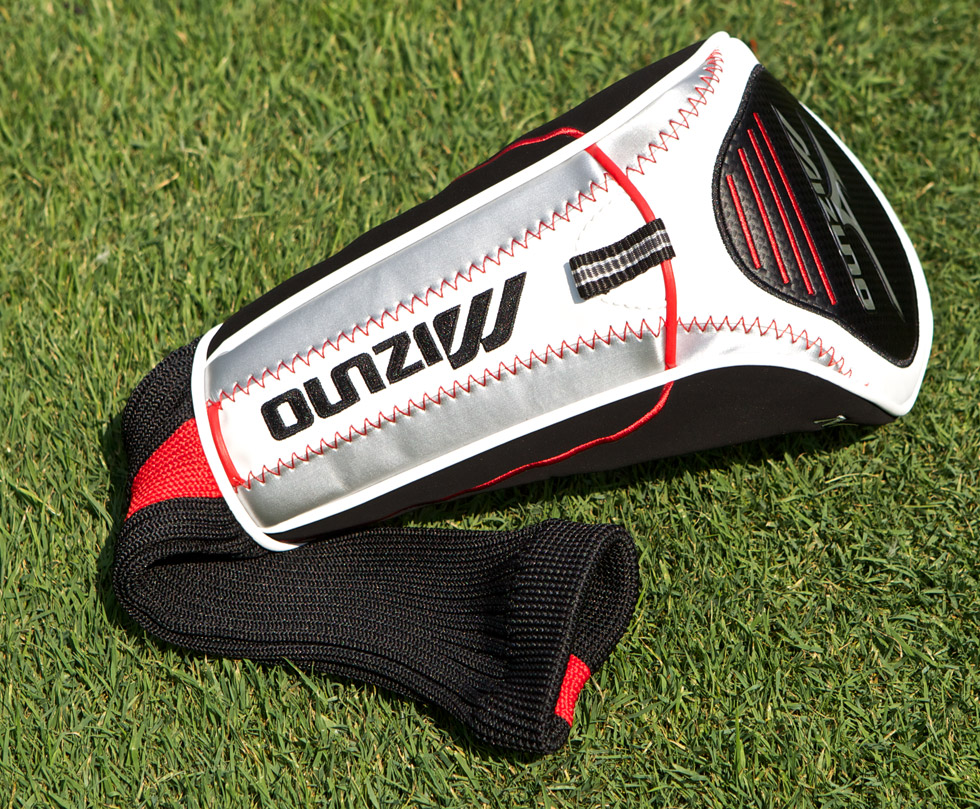
The headcover – a sock-and-nylon variety – works well, and the wrench (seen below) is hidden in the little pocket so it’s always handy, unlike some other wrenches…
The first thing I noticed when hitting the MP-630 was the sound it makes. It’s been a long time since I’ve swatted balata with persimmon, but the noise harkens back to that. In modern day equivalents, it sounds like the perfect combination of a carbon composite material and a titanium or even steel head. The sound is a bright yet heavy “thump” that sounds more like an MLB player swatting a home run than the loud, tinny, hollow noises commonly made by drivers these days. I’m having a hard time thinking of a driver that sounded better, and may very well have to go back to balata and persimmon to start building that list!
The ball flight with this driver is incredibly consistent across the face. I was not punished severely for missing high or low, towards the toe or heel. The driver seems to have a fair amount of bulge and roll, which likely helps here. Distance on mis-hits was perhaps a bit more than you’d see on a super-MOI type driver, but distance loss was less than with some other “player’s drivers” I’ve hit, too. I play a push draw primarily, and shots hit on the toe would simply push more and draw a bit more and shots hit on the heel would start straighter and draw less. Likewise for shots hit high or low on the face – very little would change about the height of the ball.
Distance? The MP-630 is no longer than any other driver out there these days, but it’s no shorter either. Driver technology has pretty much maxed out distance across the world of golf, so the best you can do is get fit and try to get to your ideal launch conditions to maximize distance. The MP-630’s Fast Track system will help you to do just that.
And how much, specifically, can the Fast Track system do? 45 positions sounds like a lot, and it is. It’s too many to discuss, so I’ll talk about the extremes and averages: adjustable weight all the way towards the face, weight all the way towards the back of the club, and weight neutral or weight all in the heel, balanced, or all towards the toe.
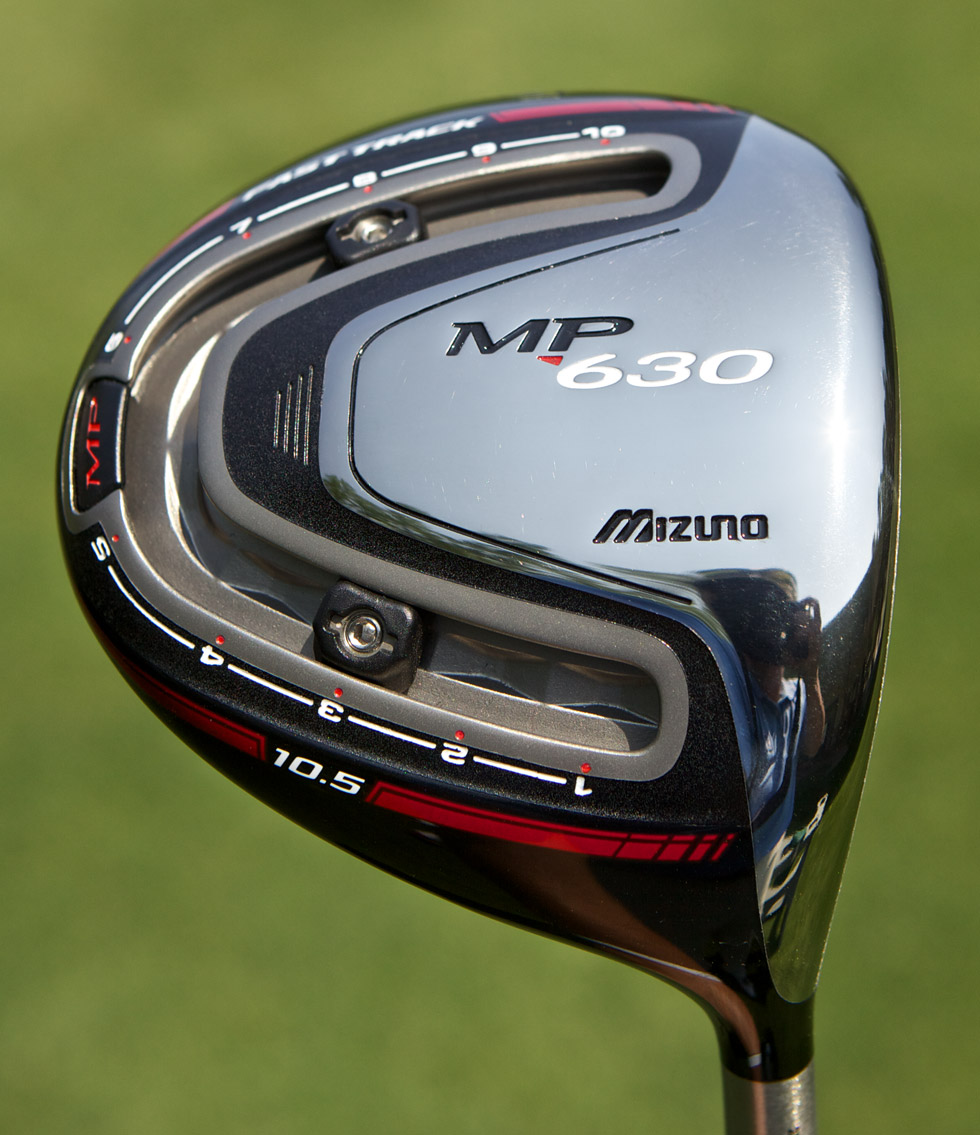
The ten positions and the two eight-gram weights are easily seen in this image.
I play about as neutral a position as you can get: weights are in the 3 and 8 positions – right in the middle both front-to-back and heel-to-toe. I typically carry the ball about 265 to 270 yards with a draw that starts 10 yards right of the target and curves back.
With the weights positioned in the 1/10 positions as far forwards towards the face as possible, the ball flight was noticeably lower and had several hundred less RPM. If I played regularly on firm fairways or in windy conditions I might be tempted to push the weights there – or if I’d gotten a stiff shaft instead of the X flex I have. Trajectory and spin was likewise affected with the weight back in the 5/6 positions.
The heel/toe positions affected things a similar amount. My 10-yard draw turned into perhaps a 13-yard draw with the weight all in the heel and a 7-yard draw with the weight in the toe. Others will undoubtedly be affected more here – I think that a driver’s side-to-side weight distribution has less effect on balls hit pretty squarely.
Do I have any complaints? No, not really. After my initial concerns about the appearance of the size of the clubface were allayed by the results, I came to enjoy, appreciate, or like everything about this driver. It looks great, it sounds great, it allows for exactly enough adjustability (without requiring special tools – the wrench Mizuno gives you is just a hex wrench), it’s as forgiving as I need and provides the carry distance and ball flight I like to see from the tee.
The MP-630 Fast Track driver is an all-around winner.
Specifications
The MP-630 Fast Track driver comes with a 64-gram MRC Fubuki shaft in various flexes. The stock grip is a Golf Pride M-21 round grip. Custom shafts and grips are available through Mizuno’s custom department.
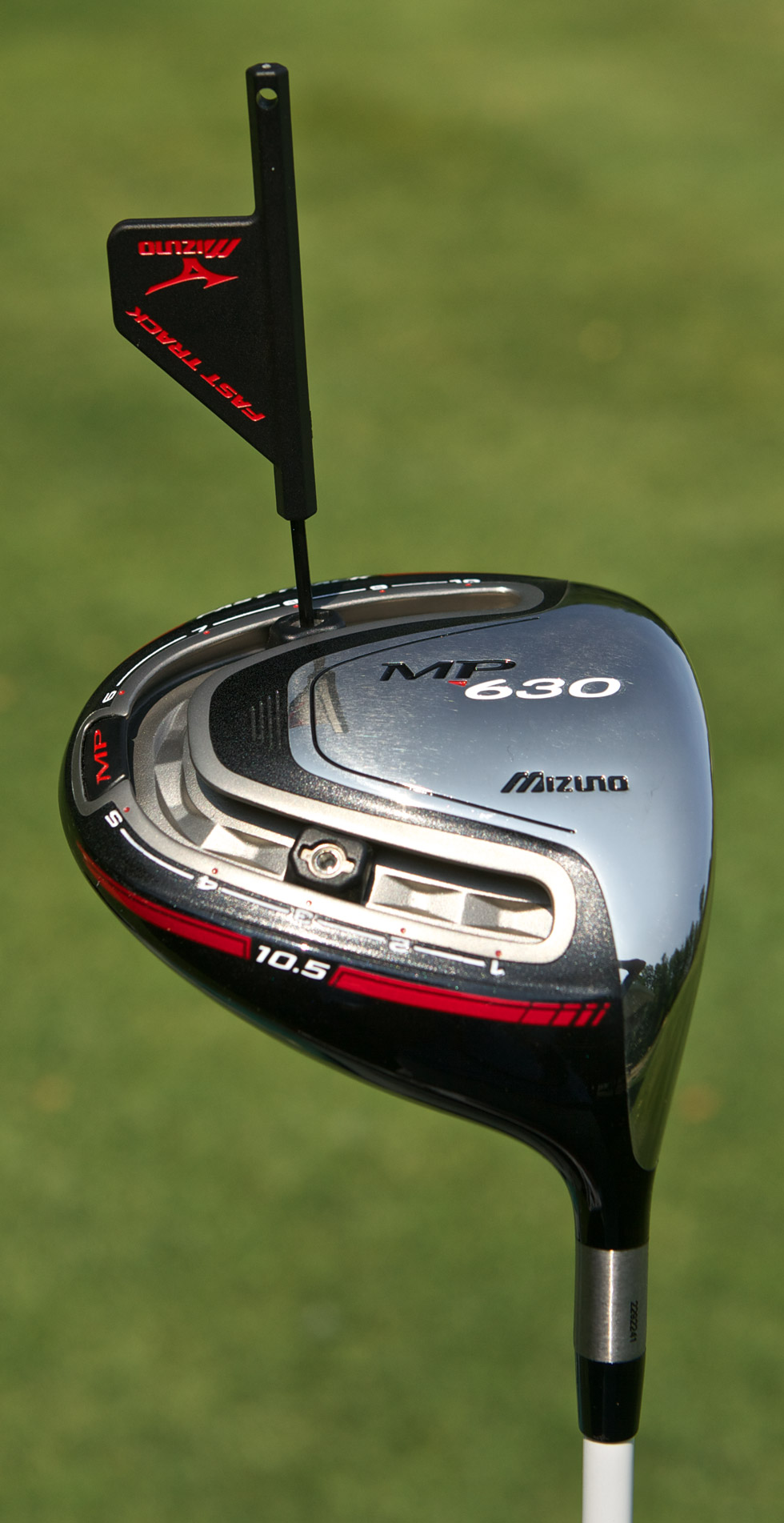
Unlike the wrenches of some other companies, Mizuno’s is just a hex wrench, so you won’t shell out more than a few bucks if you lose yours.
The driver is available in 8.5, 9.5, and 10.5° models, each with a lie angle of 58° and a stock shaft length of 45 inches. No left-handed models are available.
Club LH Loft Lie Offset Bounce Length ---- --- ----- --- ------ ------ ------ 8.5 N/A 8.5° 58° N/A N/A 45" 9.5 N/A 9.5° 58° N/A N/A 45" 10.5 N/A 10.5° 58° N/A N/A 45"
MSRP is $499, though you’ll find this driver for $399 virtually everywhere.
Conclusion
If nothing else, do yourself a favor and stop overlooking Mizuno’s hybrid, fairway wood, and driver offerings. The MP-630 Fast Track driver is proof positive that Mizuno is more then capable of producing some serious equipment outside of the irons and wedges categories.
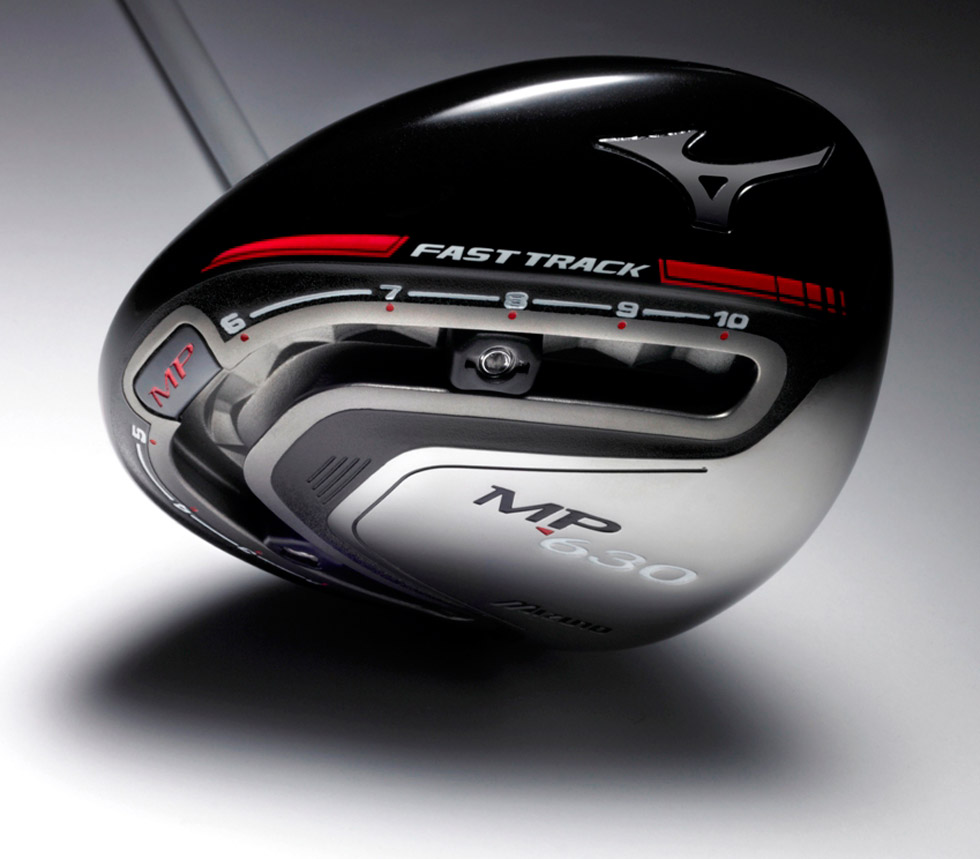
Given the proper shaft, loft, and a swing that’s capable of finding hitting within an inch of the sweet spot consistently, the MP-630 is definitely a club you should try. Give it a whack, listen to the sweet sound at impact, and look up to see your ball rocketing down the fairway.

Love the sound of this driver, maybe not as much as you but it’s nice. I’m still using an older model but my playing partner uses this and it sounds great.
It does look a little small but the weights being permanently in the head are nice too. It’s unfortunate that Mizuno’s irons overshadow their other clubs because in my opinion their metals and hybrids and drivers are actually BETTER than their irons these days.
No Left handed options? Boooooo!
I have the MP 600 and the MP 630 fast track. The FUbuki shaft hits a much lower flight. I swaped the two shafts. Put the Fubuki x flex in the MP 600 10.5 deg and I love this combination. great contrall and great distance 285 + yrds. The MP630 9.5 dedg with Fuji E360 S is also a great combination. get higher ball flight than with the Fubuki. I get more distance with this combination than with the Fubuki and MP 630. I cannot make up my mind what combination I like best. I play of 4 handicap and have played competitive golf for past 20 yrs. I must say reading through driver reviews I am “impressed” with how many american guys hit the ball + 300 yrds. most are 12 + handycaps and hit the ball longer than 96% of the pro’s on tour?? or is that distance down a mineshaft with the wind from behind.??
I noticed you hit much higher push draws now. Is that because you changed the weighting in the club or because you’re swinging better with Stack and Tilt?
Mizuno’s recent selective-exclusion of lefties is extremely disappointing…
Erik, is this now your driver instead of Titleist?
You bet it is. I started the year with the i15, but like this more than that.
I’m testing the 910 D3 but the MP-630 is going to be tough to knock out of the bag.
Erik,
Did you have an opportunity to test the non-FastTrack version? If so what did you think of that?
tristan, no, I did not have a chance. I can’t imagine it being much better, and of course you’d be giving up the adjustability.
Just asking because I picked one up on the cheap… figured it probably be the same as the fast track in the “neutral” position which is how I set my MP-600.
I recently have thrown an Exotics CB3 Tour into the bag. low spin, and more side to side control with a slight dip in forgiveness. What category in terms of the design, with neutral settings, would this be under? i know you can affect the trajectory and spin with the weights, and obviously the shaft comes into play with those adjustments. It looks like a B-E-A-Utiful club and i like no alignment like my CB3 Tour and the smaller compact look at address.
Lastly, didn’t notice anything on the feel…ive only tried a few mizuno iron demos and agree they are buttery…but where does this club sit in the entire market in terms of feel? powerful like a g15 or solid like a 910? im hoping for soft like mizzy forgings but with enough feel to tell me where im at on the face.
I’ve had an MP-630 Fast Track (9.5 degrees, stiff Fubuki shaft) in my bag for about a year. I took it in this evening to a Golfsmith to compare to some other drivers. I hit the TaylorMade Burner 2.0 & R11, an Adams (I think it was the Speedline Fast 12), and the Ping G20, all 9.5 degrees with stiff shafts. Hit about 3-5 drives with each club. My Mizuno was 10-15 yards longer than any of the other clubs, and the dispersion was tighter as well. After watching me hit the different drivers and reviewing my results, the salesman said it was clear that my results with the Mizuno were the best of the bunch. Looks like my MP-630 Fast Track will be staying put in my bag.